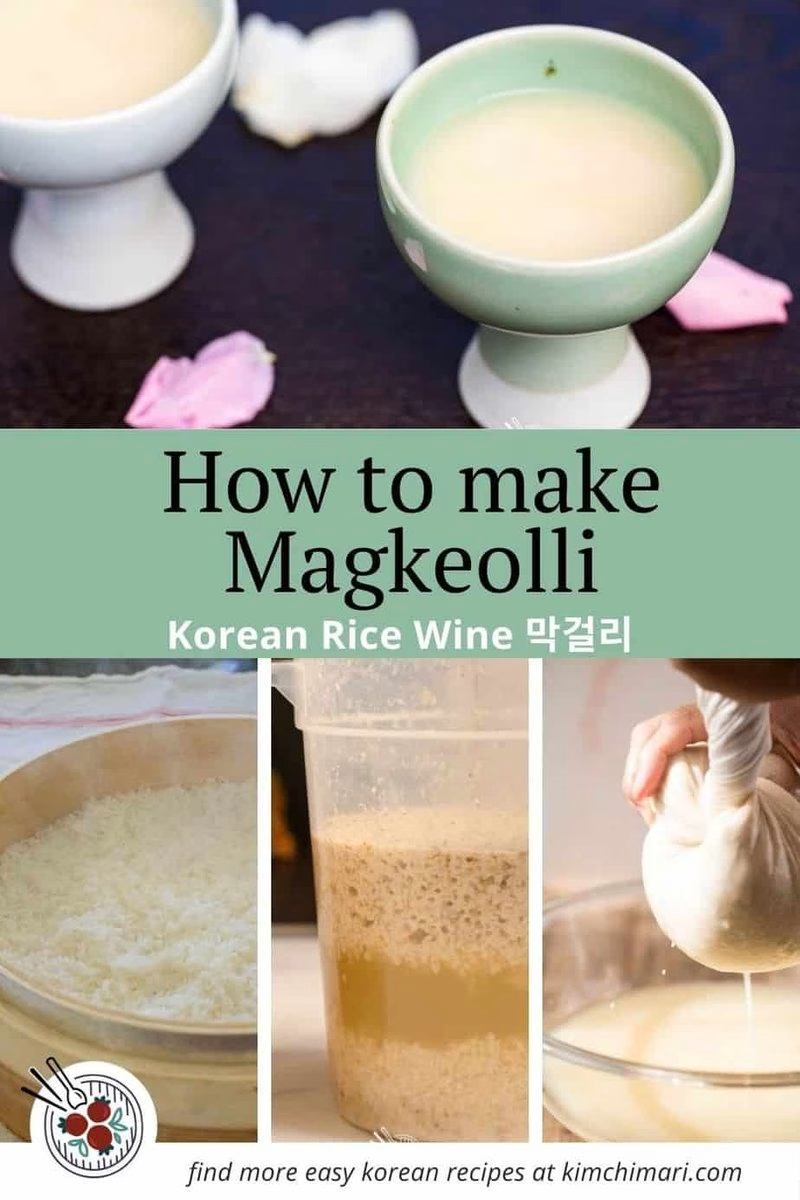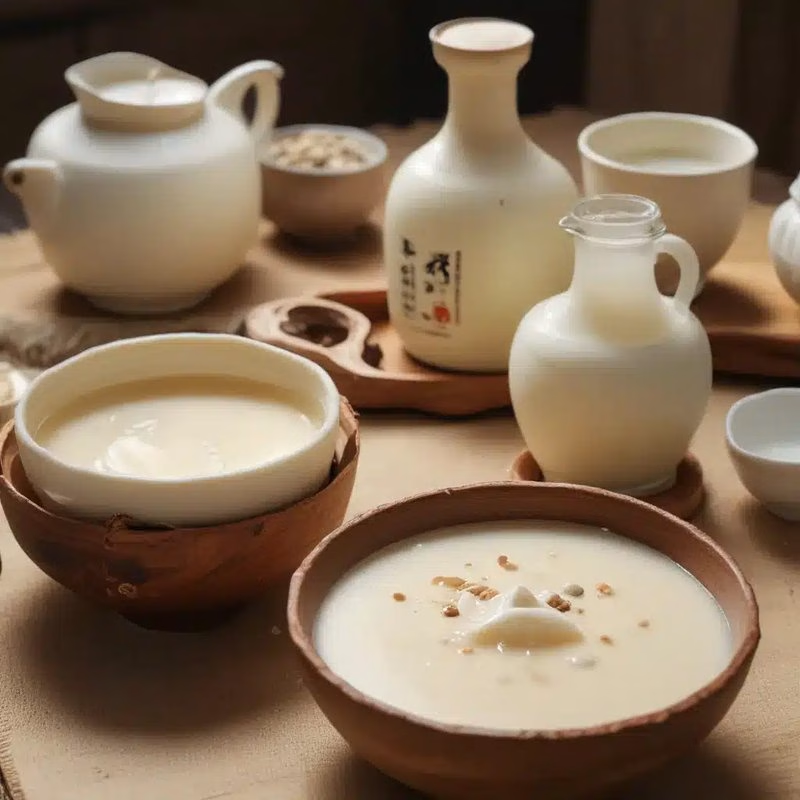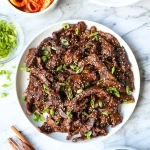
Makkoli, also known as milky rice wine, is a traditional Korean beverage that has captured the hearts of many with its creamy texture and slightly sweet flavor. Originating from Korea, this fermented rice wine has been enjoyed for centuries, often accompanying hearty meals or festive occasions. The fascinating thing about Makkoli is its unique fermentation process, which gives it a complex, multi-layered flavor profile that celebrates its rice base.
In this article, you’ll learn how to make Makkoli (Milky Rice Wine) at home, diving into the ingredients, step-by-step instructions, and some expert tips to perfect your brew. You’ll also explore variations of this delightful drink and understand its traditional significance. Let’s embark on this delicious journey of creating homemade Makkoli (Milky Rice Wine) together!
Ingredients
| Ingredient | Measurement | Description |
|---|---|---|
| Sweet Rice (also known as Glutinous Rice) | 2 cups | Sweet rice is essential for Makkoli as it provides the necessary starches for fermentation, resulting in its creamy texture. |
| Water | 4 cups | Water acts as the medium for the fermentation process. Using clean, filtered water enhances the final taste of the Makkoli. |
| Nuruk (fermentation starter) | 1/2 cup | Nuruk is a Korean fermentation starter made from wheat and mold, essential for converting the starches into sugars during fermentation. |
| Sugar | 1/4 cup | Sugar helps to boost fermentation and gives Makkoli its signature sweetness. You can adjust this to taste! |
Step-by-Step Instructions
- Step 1: Prepare the Sweet Rice – Rinse 2 cups of sweet rice in several changes of water until the water runs clear. Then soak the rice in clean water for about 6 hours or overnight. This helps the grains soften for optimal cooking.
- Step 2: Cook the Sweet Rice – After soaking, drain the rice and steam it over high heat for about 30 minutes. Once cooked, let it cool to room temperature. This step is crucial because hot rice can kill the fermentation processes.
- Step 3: Combine Ingredients – In a large bowl, combine the cooled sweet rice, 1/2 cup of Nuruk, and 4 cups of water. Mix them well to break up the rice grains and ensure even distribution of the Nuruk for fermentation. Don’t worry about a few lumps – they’ll dissolve over time!
- Step 4: Let It Ferment – Cover the bowl with a clean cloth and let it sit at room temperature for 3 to 5 days. Stir it daily to aerate and encourage fermentation. Visual signs include bubbles and a pleasant sour smell.
- Step 5: Strain and Store – After fermentation is complete, strain the liquid through a fine mesh sieve or cheesecloth into a clean container. This is your Makkoli (Milky Rice Wine)! You can discard the solid rice remains or use them in other recipes.
- Step 6: Chill and Serve – Refrigerate the Makkoli for a few hours before serving. It’s best enjoyed chilled, in traditional bowls or glasses. You can celebrate your accomplishment with some fried snacks or savory dishes!
Pro Tips
- Tip 1: Use fresh Nuruk for the best fermentation results. It might be hard to find, but it’s worth the hunt!
- Tip 2: Experiment with sugar levels based on your taste preferences. Adding less sugar results in a more sour Makkoli, while more sugar leads to a sweeter drink.
- Tip 3: Be patient during the fermentation process! The flavors develop over time, so it’s best to resist the urge to rush.
- Tip 4: Makkoli can also be flavored with fruits like strawberries or herbs; feel free to get creative!
Nutritional Information
| Nutrient | Per Serving (4 oz) |
|---|---|
| Calories | 90 |
| Protein | 1 g |
| Carbohydrates | 20 g |
| Saturated Fats | 0 g |
| Fiber | 0 g |
| Cholesterol | 0 mg |
| Sugars | 5 g |
| Fat | 0 g |
FAQs
What is the best way to store Makkoli (Milky Rice Wine)?
Store Makkoli in an airtight container in the refrigerator. It can last for about a week, but the flavors may change over time.
Can Makkoli (Milky Rice Wine) be made vegan or gluten-free?
Yes! While traditional Makkoli uses sweet rice, you can substitute it with gluten-free grains. Additionally, ensure your Nuruk is gluten-free if needed for dietary restrictions.
What are the best side dishes to serve with Makkoli (Milky Rice Wine)?
Pair your Makkoli with savory pancakes, fried foods, or even spicy Korean dishes like kimchi to complement the drink’s sweetness.
How long does it take to prepare Makkoli (Milky Rice Wine)?
Preparation takes about 30 minutes, but the fermentation process lasts between 3 to 5 days, depending on your desired flavor.
Can I freeze Makkoli (Milky Rice Wine) for later?
It’s not recommended to freeze Makkoli as the freezing process can alter its texture and flavor. It’s best enjoyed fresh!
What is the alcohol content of Makkoli (Milky Rice Wine)?
The alcohol content typically ranges from 6% to 8% depending on the fermentation length and sugar levels used.
Can I use other types of rice for making Makkoli (Milky Rice Wine)?
While sweet rice is traditional for Makkoli, some variations use regular rice. However, this may alter the final taste and texture.
Is Makkoli (Milky Rice Wine) gluten-free?
Traditional Makkoli may contain gluten due to the use of Nuruk. However, gluten-free versions can be made with the right substitutes.
Making Makkoli (Milky Rice Wine) at home is a rewarding experience that connects you with Korean culture in a unique way. The creamy, slightly sweet beverage might just become a staple in your kitchen! Remember, the process takes a bit of time, but the final product is well worth the wait.
Have you tried making Makkoli (Milky Rice Wine) before? What variations did you enjoy? Share your thoughts and experiences in the comments below!






